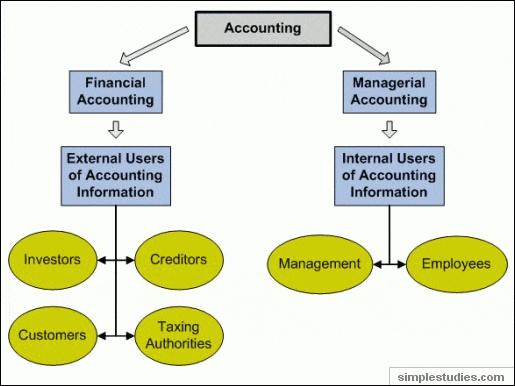Introduction to Accounting
Accounting and double-entry bookkeeping; financial and managerial accounting; basic financial statements (income statement, statement of cash flows, statement of changes in owners' equity and balance sheet); permanent (real) and temporary (nominal) accounts; four types of accounting transactions.
1. Definition of accounting
What is accounting? People in the business world consider it to be quite important. When you plan to invest in McDonald's stock, buy new equipment, or forecast future sales and expenditures, you almost certainly use accounting information. Why? Because, accounting provides information for decision-making in the business world.
Accounting is a service-based profession that provides reliable and relevant financial information useful in making decisions.
Financial information may include sales, expenses, taxes and other figures.
There are three steps to preparing financial information: identification, recording and communication.
First, economic events are identified. A sale at a gas station, payment of taxes by a commercial enterprise, or purchase of insurance are all examples of economic events.
Next, all economic events are recorded. Recording provides a history of a company's financial activities. In this step, economic events are also classified and summarized.
Finally, information about classified and summarized economic events is communicated to interested parties. Such communication may take several forms. One such form is a financial statement which you will read about later in this tutorial.
2. Users of accounting information
There are two broad categories of interested parties, or accounting information users:
- external users
- internal users
External users are parties outside the reporting entity or company who are interested in the accounting information.
Types of external users include:
- Investors (i.e., owners), who use accounting information to make buy, sell or keep decisions related to shares, bonds, etc.
- Creditors (i.e., suppliers, banks), who utilize accounting information to make lending decisions.
- Taxing authorities (i.e., Internal Revenue Service), who need accounting information to determine a company's tax liabilities.
- Customers, who may need accounting information to decide which products to buy from which companies.
Internal users are parties inside the reporting entity or company who are interested in accounting information.
Types of internal users include:
- A company's senior and middle management, who use accounting information to run the business.
- Employees who use accounting information to determine a company's profitability and profit sharing.
Financial accounting provides information that is designed to satisfy the needs of external users. Such reporting is usually done in the form of financial statements.
Managerial accounting provides information that is useful in running a company by internal users. Such reporting is usually accomplished through custom-designed (or managerial) reports.
The illustration below shows relationships between the types of accounting and accounting information users.
Illustration 1: Types of accounting and accounting information users

